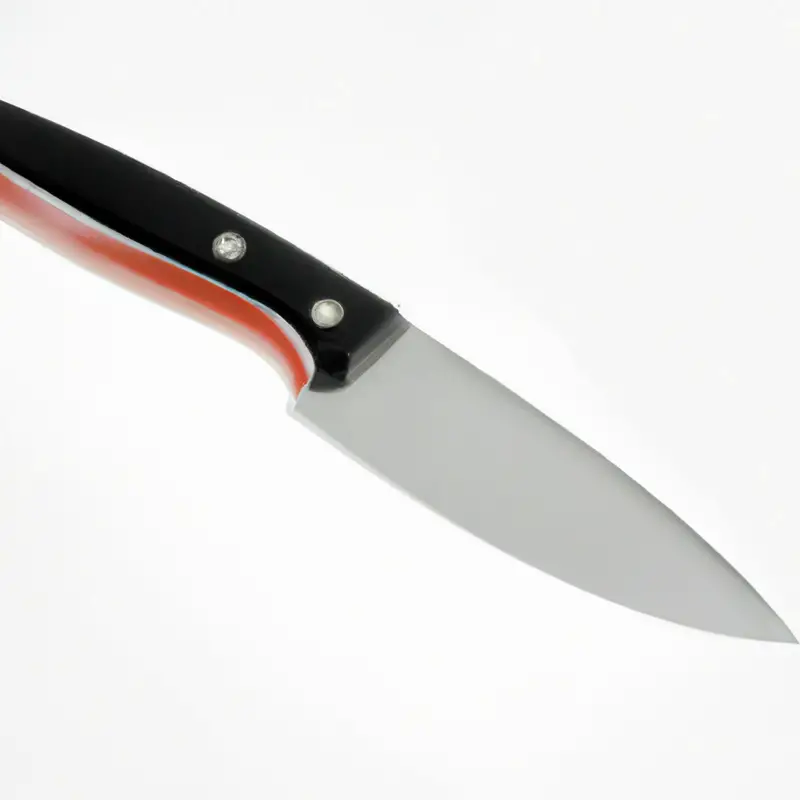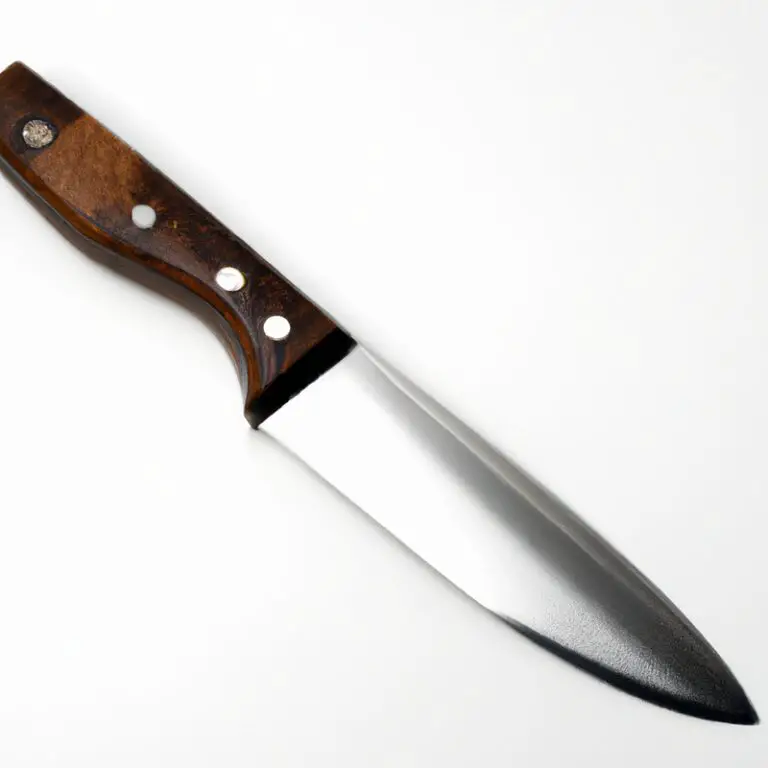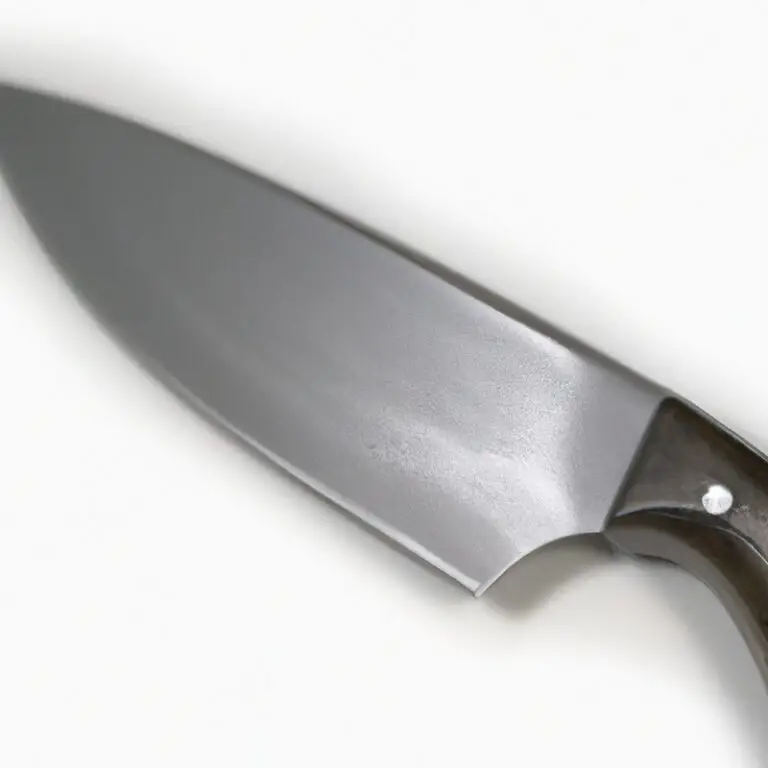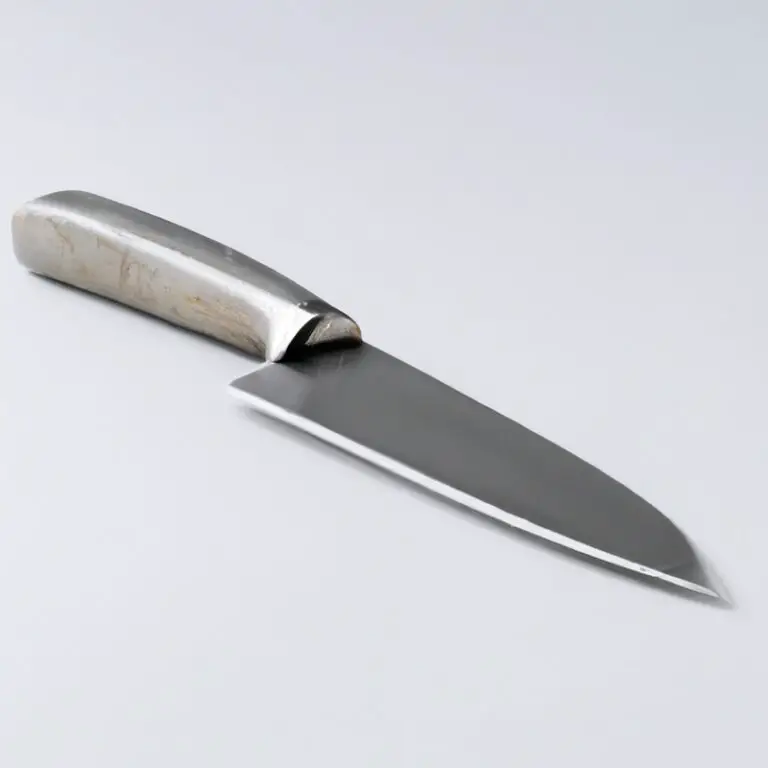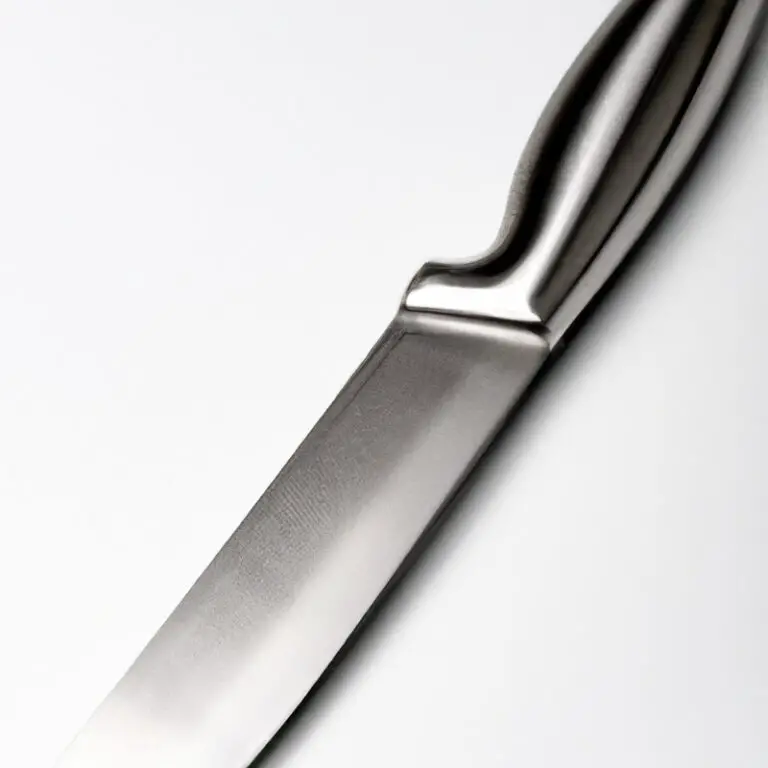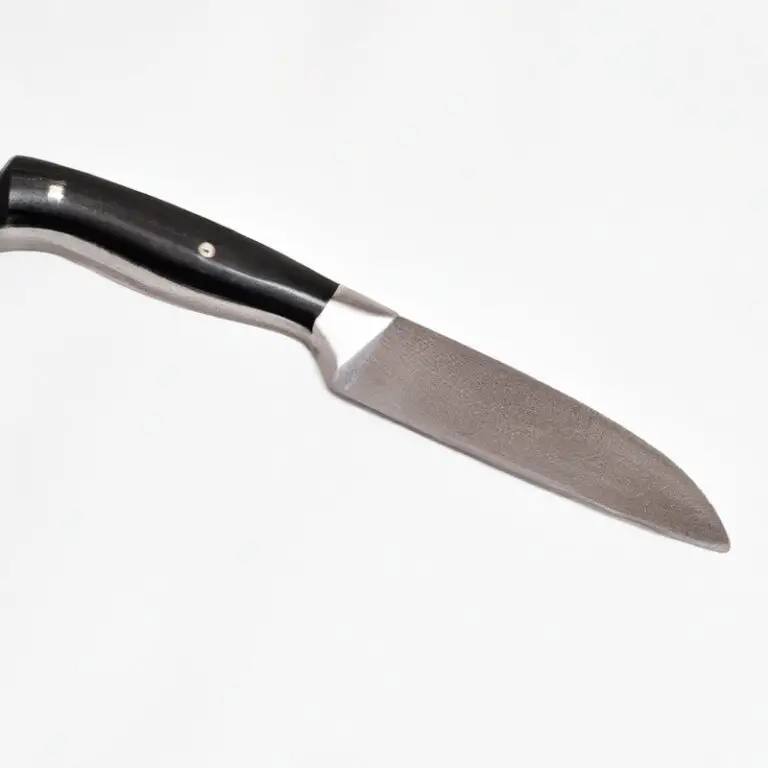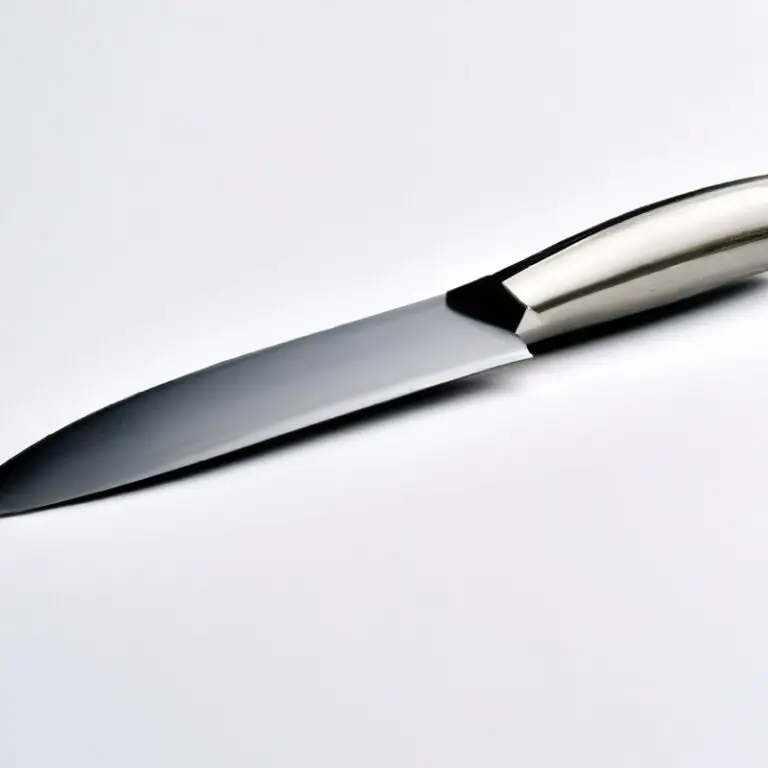How Long Should The Blade Of a Paring Knife Be? – Expert Advice
Key Takeaways:
- The length of a paring knife blade depends on its intended use and personal preference.
- A shorter blade is ideal for intricate tasks, while a longer blade is better suited for larger fruits and vegetables.
- Choosing a paring knife with a comfortable handle and a sharp blade is crucial for optimal performance.
- Proper blade maintenance, including regular sharpening and honing, is essential for extending the lifespan of a paring knife.
As a cooking enthusiast, I’ve come to realize the importance of having the right tools in the kitchen. Among them, a paring knife is an essential instrument for precision cutting, peeling, and trimming.
But, have you ever wondered how long the blade of a paring knife should be?
In this article, we will explore the factors to consider when determining the ideal blade length for a paring knife, the pros and cons of different sizes, safety concerns, and common mistakes to avoid. Let’s delve deep into the world of paring knives and discover how blade length can impact comfort, control, and overall performance.
| Blade Length | Use | Pros | Cons |
|---|---|---|---|
| Less than 2 inches | Precise tasks like trimming, peeling, and shaping | -More control over the knife -Better precision and accuracy -Can work with small or delicate ingredients more easily | -Not suitable for larger or tougher ingredients -May take longer for bigger tasks |
| 2-3 inches | Multi-purpose for most kitchen tasks | -Versatile for most kitchen tasks -Easier to handle than longer knives -More maneuverable in tight spaces | -May be too short for some tasks like slicing bigger ingredients |
| More than 3 inches | Bigger ingredients or longer cuts | -Can handle bigger tasks more easily -More leverage for tougher ingredients | -May feel bulky or unwieldy -Less precision and control for delicate tasks |
Purpose of a Paring Knife
The purpose of a paring knife is to facilitate the precise cutting and trimming of fruits, vegetables, and other small items that require a delicate touch. Its short, narrow blade allows for greater control and accuracy in making intricate cuts, such as removing seeds and stems or creating decorative garnishes.
A paring knife is an essential tool for any home cook or professional chef looking to produce high-quality dishes.
Its versatility and precision make it an excellent addition to any kitchen.
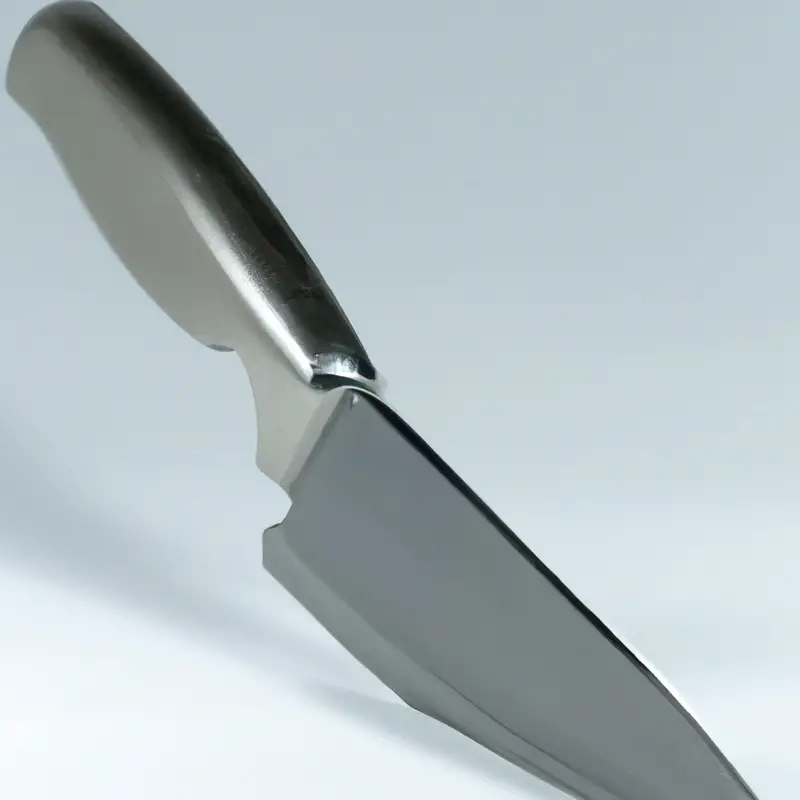
Blade Length Considerations
The length of a paring knife blade depends on the task at hand. Shorter blades, around 3-4 inches, are best suited for smaller fruits and vegetables and detail work.
Longer blades, around 5-7 inches, are better suited for tasks where more leverage and control is needed, such as peeling and trimming larger vegetables.
Ultimately, the ideal blade length depends on personal preference and the specific tasks the knife will be used for.
Factors to Determine Blade Length
The factors that determine blade length include the type of cutting task at hand, the size and shape of the food items to be cut, and personal preference and comfort. For intricate and detailed tasks, a shorter blade length between 2.5 to 3.5 inches is ideal.
A longer blade length of 3.5 to 4.5 inches is better suited for larger and harder food items.
Additionally, the size and shape of the user’s hand should also be taken into consideration to ensure comfort and control during use. It’s essential to select a blade length that allows you to execute your cutting tasks safely and effectively.
So, consider the task, the food, personal preference, and comfort when deciding on a blade length for your paring knife.
Standard Blade Length for Paring Knife
Standard Blade Length for Paring Knife: The standard blade length for a paring knife is 3-4 inches. However, some manufacturers produce blades that are up to 5 inches long.
Professional chefs may prefer a shorter blade for more control, while home cooks may opt for a longer blade for versatility.
Ultimately, the size of the blade comes down to personal preference and intended use. It is essential to choose a blade length that feels comfortable and provides ample control for the task at hand.
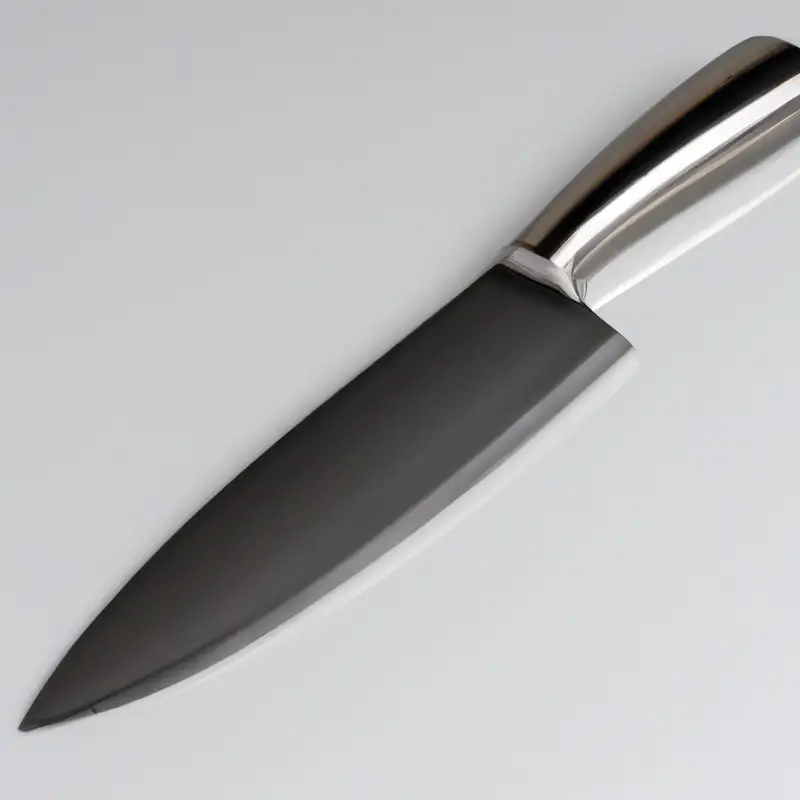
Short Blade vs. Long Blade
When it comes to choosing between a short blade and a long blade for a paring knife, it is essential to consider the specific task at hand. Short blade paring knives (approximately 3-4 inches) are ideal for intricate tasks that require a higher level of precision, such as peeling fruits and vegetables.
On the other hand, long blade paring knives (approximately 6-10 inches) are better suited for tasks that require more reach and a longer cutting surface, such as trimming and halving larger fruits and vegetables.
It is essential to note that the blade’s length does impact the overall comfort and control during use. While a short blade may provide excellent precision, it may be uncomfortable during extended use.
In contrast, a long blade may be challenging to control for intricate work.
Ultimately, the choice between a short and long blade paring knife depends on the user’s preference and the specific task at hand.
Pros and Cons of Different Sizes
Pros and Cons of Different Sizes: Different sizes of paring knives offer different advantages and disadvantages. A short blade offers greater control and maneuverability, while a longer blade offers increased versatility and productivity.
Pros of Short Blade:
- Greater control and precision for detailed work.
- Easier to handle, especially for individuals with small hands or weak grips.
- More comfortable to use for extended periods of time.
Cons of Short Blade:
- Limited in terms of productivity and versatility.
- Inability to tackle harder and larger items.
Pros of Long Blade:
- Greater versatility and productivity.
- Ability to handle larger and harder items.
- Ability to make smoother and longer cuts.
Cons of Long Blade:
- Harder to control and maneuver.
- More challenging to handle for individuals with small hands or weak grips.
- More prone to accidents and injuries.
When choosing the size of your paring knife, consider the nature of your tasks and your comfort level. A short blade may be more appropriate for detailed work, whereas a longer blade may be more suitable for larger items.
Whatever your choice may be, always prioritize safety and maintain the blade length through proper care and maintenance.
Comfort and Control with Blade Length
Comfort and control when using a paring knife are essential for optimal performance. The length of the blade plays a crucial role in both aspects.
A shorter blade length of around 2 to 3 inches offers greater control, which is ideal for detailed tasks such as peeling.
However, a longer blade around 4 to 5 inches provides more comfort, reducing the strain on the user’s hand and wrist while cutting larger items like fruits and vegetables. It is essential to consider what types of tasks the knife will perform before choosing a blade length that maximizes both comfort and control.
Ultimately, it is a personal choice that can affect the efficiency and enjoyment of preparing meals.
Blade Length and Safety
Blade length plays a crucial role in the safety of a paring knife. A blade that is too long or too short can put the user at risk of injury.
A longer blade can be challenging to control, making it easier for it to slip and cut the user.
On the other hand, a shorter blade can require more force, leading to more slips and cuts. To ensure safety while using a paring knife, it is essential to choose a blade length that suits you.
Consider the size of your hands and the types of tasks you plan to use the knife for.
A good rule of thumb is to opt for a blade length that is roughly the same as your index finger. Additionally, keep the knife sharp and avoid using it on hard surfaces or cutting through bones and frozen foods.
Always cut away from your body and use a cutting board to prevent injury.
Blade length and safety go hand in hand when it comes to using a paring knife. Choosing the right blade length and following safety precautions can help prevent accidents and ensure a successful cooking experience.
Common Mistakes to Avoid
Common Mistakes to Avoid:
- Choosing an excessively long or short blade: Choosing a blade that is either too long or too short can affect the efficiency and accuracy of the paring knife. A blade that is too long may be challenging to maneuver, while a blade that is too short may not have enough leverage to perform delicate tasks.
- Neglecting the knife’s purpose: A paring knife is specifically designed for precision cutting and peeling, and using it for other tasks like chopping and slicing can cause damage to the blade, leading to blunting or dulling.
- Poor Maintenance: Neglecting the necessary maintenance of the paring knife’s blade, such as regular sharpening and honing, can cause it to become dull and lose its effectiveness.
- Buying Cheap Knives: Investing in a cheap or low-quality knife can result in low performance and a shorter lifespan. Cheaper knives have a lower-quality steel blade that can wear down more quickly, dull faster, and may even rust.
- Improper Usage: Using a paring knife incorrectly such as applying too much pressure, or using it to cut things that are too hard, can lead to the knife’s blade becoming damaged or blunt.
Avoiding these common mistakes ensures that the paring knife will remain effective, perform well, and have a long lifespan.
Maintaining the Blade Length
Maintaining the blade length of a paring knife is essential for optimal performance and longevity. To maintain the blade length, it is important to keep the knife sharp at all times.
Dull blades can cause damage to the length and edge of the blade, making it difficult to cut accurately.
Sharpen the blade using a sharpening stone or honing steel after each use to maintain the blade’s length and edge. Another important aspect is to avoid cutting on hard surfaces, which can cause the blade to become dull or damaged.
Instead, use a cutting board or other appropriate surfaces to minimize the risk of damaging the edge and length of the blade.
Lastly, store the paring knife in a safe place, either in a knife block or a knife sheath, to prevent damage to the blade and maintain its length. With these simple steps, you can ensure that your paring knife remains in excellent condition and maintains its length for optimal performance.
Final Verdict
The blade length of a paring knife is a crucial factor when it comes to achieving precision and control in your kitchen tasks. With the information presented above, you can now confidently select the appropriate blade length based on the size of the food item, your hand size and grip preference.
Remember, a shorter blade offers better control and is great for intricate tasks, while a longer blade is ideal for larger items and requires less hand movement.
Additionally, it’s important to maintain your paring knife’s blade length for optimal performance. By avoiding common mistakes and using proper techniques, you can ensure the longevity of your blade length.
With these considerations in mind, you can trust that your paring knife will be a valuable addition to your culinary toolset, allowing you to prep and cook with precision and ease.
Happy chopping!

